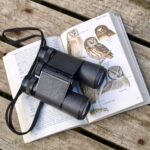Why Documenting Birds in Your Garden is Important
The fluttering of wings, chirping melodies, and vivid hues of feathered guests can transform any garden into a vibrant oasis. While the aesthetic value of birds is undeniable, their role stretches beyond just beauty. Birds contribute significantly to maintaining garden health and the larger ecosystem. They control pests, pollinate plants, and even aid in seed dispersal. By documenting these avian visitors, you can better understand, appreciate, and aid the biodiversity that thrives right in your backyard.
Get to Know Your Birds
Embarking on this ornithological adventure begins by familiarising yourself with the common bird species in your region. Websites such as learn.arcgis.com are packed with information and tools for bird identification and geo-analysis.
This platform provides interactive maps that can aid in identifying avian species based on geographical regions. This understanding goes a long way in making accurate documentation, contributing vital information to bird conservation and research.
Tools for Documenting Birds
Inventory your bird-watching toolkit with essentials like:
- Binoculars: To get a clear, up-close look at birds.
- Cameras: To capture competent records for identification and documentation.
- Notebooks and Pens: For detailed observations like plumage details, song patterns, feeding and nesting behavior.
- Birding Apps: A range of mobile applications are available for instant bird identification and recording.
Methods of Recording Bird Visits
Developing a systematic approach to document your avian visitors could look like the following:
- Keeping a Garden Diary: Details bird sightings and unusual behaviors.
- Drawing and Photographing: Useful for later identification and sharing with other bird enthusiasts.
- Counting and Noting Bird Behaviors: Helps in understanding species population and diversity.
Incorporating Bird-Friendly Infrastructure
Creating an inviting space for your feathered guests can be achieved by incorporating bird-friendly infrastructures. Based on a study by npshistory.com, consider adding elements such as bird feeders, bird baths, birdhouses, and a variety of plants, which offer food and habitat for various bird species.
Understanding Bird Patterns
To become a proficient bird documenter, gain insights into bird behaviors and patterns via terrapinbrightgreen.com. This heightened understanding will aid in predicting and monitoring bird visits, ultimately enhancing your documentation skills.
Sharing Your Observations
Lastly, consider sharing your bird documentation with local birdwatching groups, natural history societies, or via online platforms dedicated to citizen science. Your backyard findings could very well contribute to larger research, monitoring, and conservation efforts.
Impact on Nature
Why does all this matter? Because attentively documenting the birds in your garden can profoundly contribute to the conservation endeavours. Your record can help track bird migrations, nesting patterns, and population dynamics. You can find joy in their presence while participating in a larger movement to protect and preserve these remarkable creatures!

